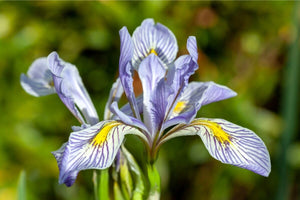All About Snapdragons: How to Start from Seed, Transplant, and Grow
SnapdragonsHave you ever wanted to grow your own beautiful snapdragons but didn't know where to start? Look no further! In this article, we will guide you through the process of starting snapdragons from seed, transplanting them, and growing them into vibrant, blooming plants.

Snapdragons (Antirrhinum majus) are beloved by humans, bees, butterflies, and hummingbirds alike. They get their name from vibrantly colored blooms, which open and close like a dragon’s mouth when squeezed. Their bright flowers grow in a spike, blooming first at the bottom of the stalk and progressing all the way up to the top of the plant.
How to Grow Snapdragon Flowers
Snapdragons perform best in cool weather, taking center stage during spring and fall when the rest of the garden can look a bit sparse. They will usually slow blooming during summer’s heat but will revive once the weather cools again. Easy to grow from seed, snapdragons are a reliable and beautiful addition to patio gardens, planters, and in-ground cottage gardens.
Growing Snapdragons from Seed
Planting snapdragon seeds is a great way to enjoy beautiful blooms in your garden all summer long! The key to a successful bloom period for snapdragons is to start sowing your seeds indoors 8-10 weeks prior to the last frost date in your area.
Snapdragons are hardy and can withstand cold temperatures, so you also have the option of sowing directly into the garden after any hard frosts have passed.
Choose Your Snapdragon Seeds
Our Tetra Mix has a mix of colors: white, pink, purple, red, and yellow. It grows to a manageable height of about 2.5 feet, ideal for both in-ground gardens and containers.
Sowing Snapdragon Seeds Indoors
Plan ahead. You can start plant snapdragon seeds 8 to 10 weeks before the last frost date.
Chill your seeds. Place your seeds in the fridge overnight before planting to encourage germination
Plant shallow. Snapdragon seeds need light to germinate. You can lightly cover them with soil or just press them in for good soil to seed contact.
Keep the soil moist. Use a humidity dome to keep moisture in until the seeds sprout in 7 to 14 days.
Once sprouted, keep snapdragon seedlings in a sunny spot and maintain even moisture.

Transplanting Snapdragon Seedlings
Snapdragon seedlings can be transplanted out when they are still small. But take time to prepare the soil and harden them off to give them the best transition.
Hardening Off
Before transplanting outdoors, acclimate your seedlings to outdoor conditions by gradually exposing them to outside temperatures and sunlight over a week. This simple process will prevent shock and prepare them for their new unprotected home outdoors.
Transplanting
Aim to get your seedlings outdoors before the first flower buds form to give them the best chance of survival. Choose a sunny spot with well-draining soil. Plant the seedlings 6-12 inches apart to allow for growth.

Caring for Snapdragon Plants
Watering and Feeding:
Water regularly, allowing the soil to dry slightly between waterings. Fertilize with a balanced, slow-release fertilizer to encourage robust growth.
Pruning and Deadheading:
Pinch back the tops of young plants to encourage bushier growth. Deadhead spent blooms often for continuous flowering.
Pest and Disease Management:
Snapdragons are generally hardy but can be susceptible to rust and aphids. Regularly inspect your plants so you can take action at the first sign of these problems. If your snapdragon plants are too damaged, you can cut stems to the base. If it’s early enough in the season, sometimes the plant can rebound and even bloom again later in the season.

Snapdragons are a joyful, popular choice for adding vivid color to cool-weather gardens. Kids especially love these enchanting flowers, and growing them can help instill an early love of gardening in the next generation. Try adding some to your garden and add some magic to your outdoor spaces.
Written by Teresa Chandler






Thank you for the information. I appreciate it. Sharon
Leave a comment